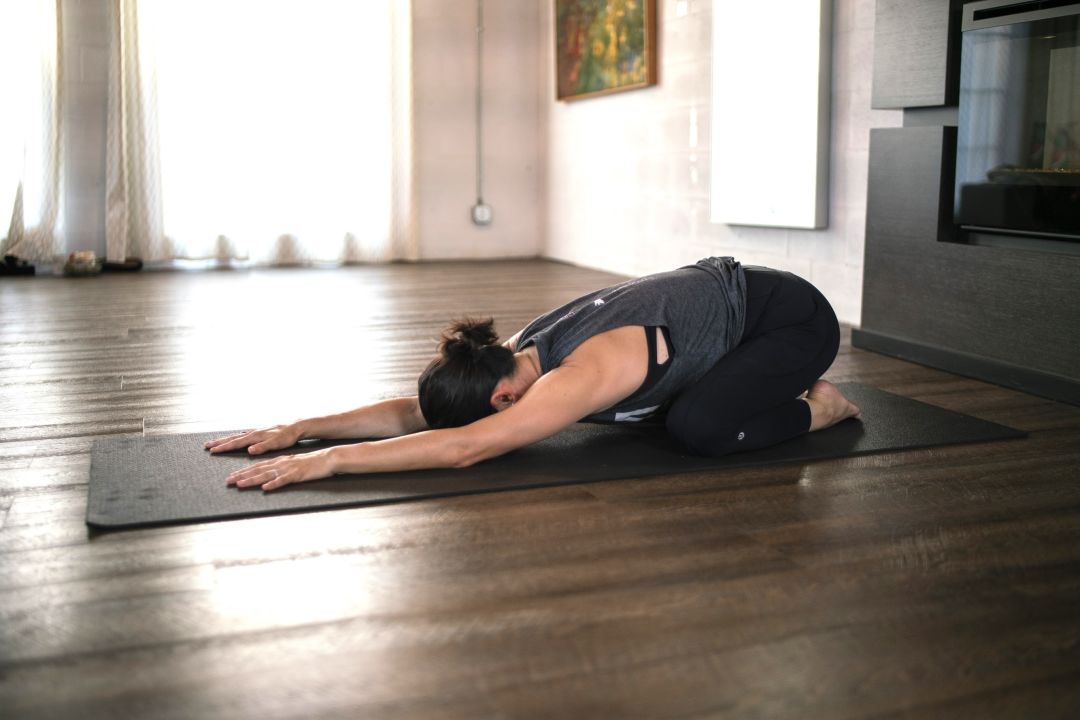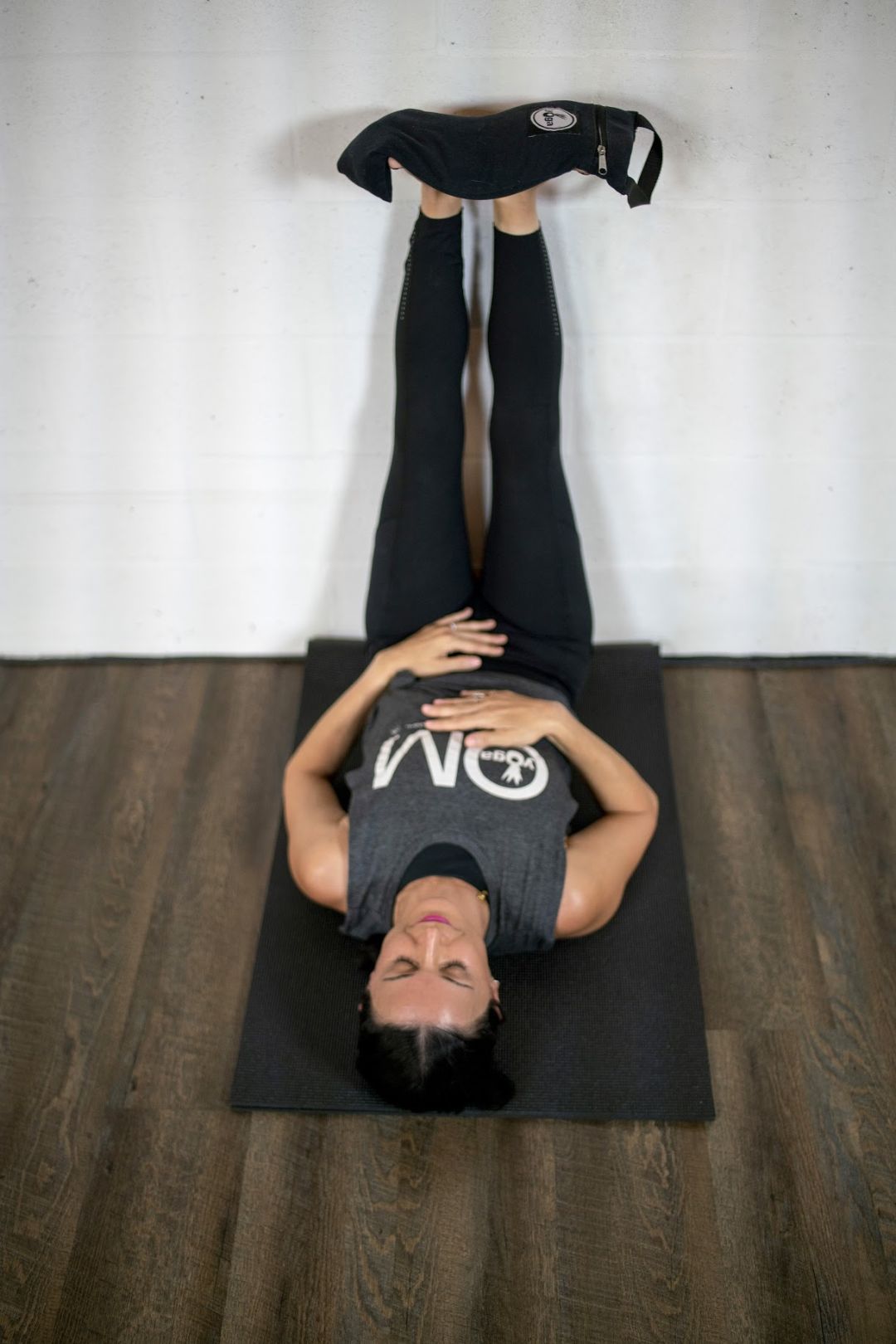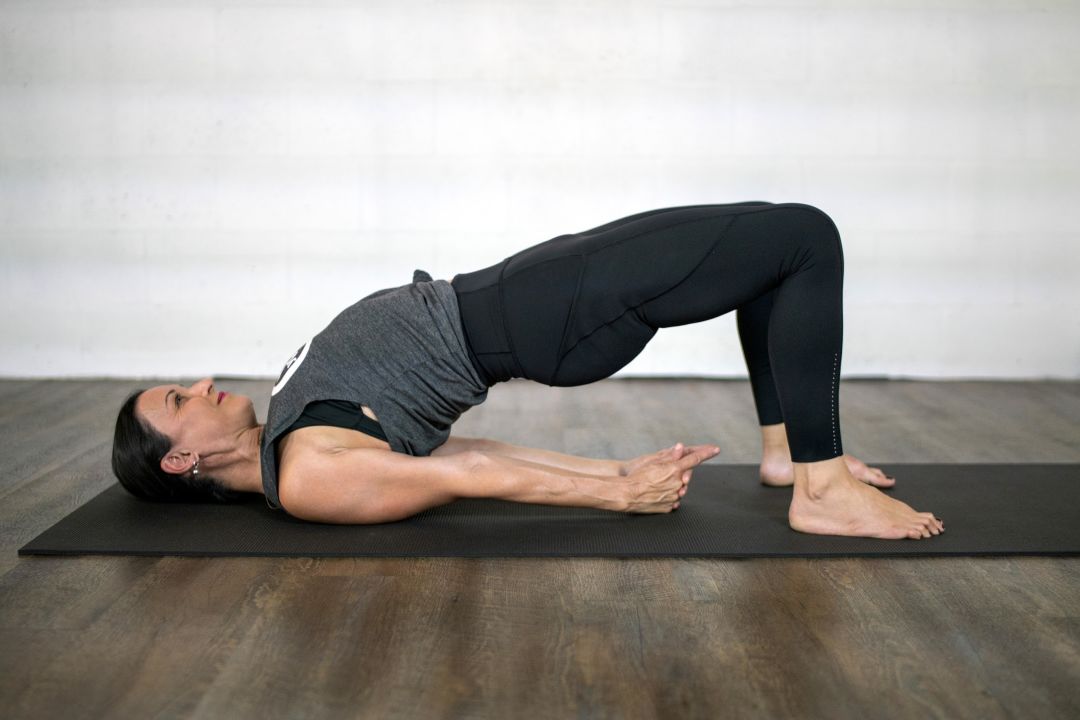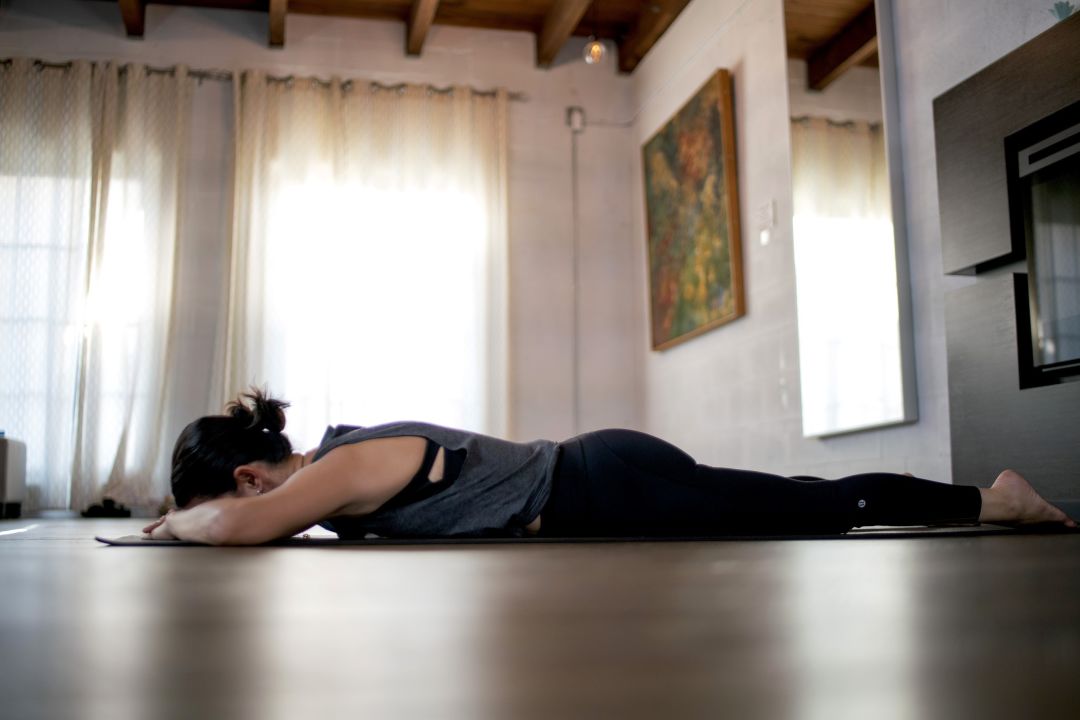Feel Better: Five Yoga Poses to Calm the Nervous System
There seems to be a frenetic cloud above, raining down stress and anxiety nearly everywhere. Its name? Coronavirus.
Did you know that yoga is one of the best ways to relieve stress and anxiety? Yep, it’s true. According to the Anxiety and Depression Association of America, 31.1 percent of adults in the U.S. will suffer from an anxiety disorder at some point in their lives. And with COVID-19 causing so much stress, worry and unease, it might be time to take a closer look at yoga, especially during these uneasy days.
Stress and anxiety trigger the release of cortisol and adrenaline in the body. That creates an imbalance of the sympathetic nervous system—your fight or flight response—which can lead to an increased risk of illness and disease. A daily yoga practice can help counteract these adverse reactions, increase relaxation, and restore balance to the body and mind. Nice, too, that it will induce a feeling of ease and wellbeing. That’s something for which many of us would trade an essential paper product!
To counter the stress downpour, we asked Pineapple Yoga + Cycling Studio owner Claudia Baeza to help us "om" it out with an at-home practice. Baeza thoughtfully chose the following five poses to calm the nervous system and bring us back to a centered, calm headspace. We know you’re already sporting your work-from-home yoga pants or something equally comfy, so grab your yoga mat and take a few minutes for yourself.
One last note: Baeza is actively working to offer on-demand online yoga classes soon, so remember to check out her website. But, at the moment, Pineapple Yoga + Cycling Studio is offering free access to its Yoga for Parkinson's Disease class; click here to register.

Pineapple Yoga + Cycling Studio Owner and Chief Yogi Claudia Baeza in Child’s Pose.
Image: Courtesy Photo
Child’s Pose (Balasana)
All levels of yogis take child’s pose, also known as “rest” pose, when they are between challenging poses. This allows for a pause in breath and time to reflect on thoughts that appear during the practice. Many express feeling a sense of comfort in this pose, relieving anxiety symptoms.
Physically, this pose helps release tension in the back, neck and shoulders, where many of us hold stress. On the mental and emotional side, it promotes a steady, even and elongated breath, which creates a deep sense of calm and relaxation. This steady, conscious breathing is known in the yoga world as "pranayama." Prana translates to “life force,” and "ayama" means “extended.” This type of breathing has been linked to the “rest and restore” response of the parasympathetic nervous system, which regulates the sympathetic nervous system.
How to Take Child’s Pose:
Sit on your mat and bring yourself to your knees with your big toes touching. Your hands should support you on the floor, with your arms and legs hip-width distance apart. If this is uncomfortable, you can bring the knees to the edges of the mat.
Begin this pose with a deep breath. On the exhale, slowly walk your hands forward. Then rest your torso on or between your thighs and gently lower your forehead to the mat or a block. This part is important because it settles the nervous system and grounds you.
As for the arms, there are two variations. One option is with the arms extended in front of the body, and the other is with the arms next to the hips. The goal is to lengthen the torso while the sitz bones lengthen towards the heels.
Once settled, take five long breaths. When finished, slowly walk the hands back toward the legs, bringing the torso upright and sitting back on the heels, or bring the hips to one side to sit on the floor.

Pineapple Yoga + Cycling Studio Owner and Chief Yogi Claudia Baeza in Tree Pose.
Image: Courtesy Photo
Tree Pose (Vrikasana)
Also known as standing pose, this pose is a great way to focus the mind on one point, called the “dristi point,” which tames a busy mind. Balancing the weight of the body on one leg requires a calm mind, a smooth breath and a steady focus. The physical nature of this pose fundamentally takes you away from thoughts of anxiety because you take your mind elsewhere.
How to Take Tree Pose:
Begin by standing upright on both feet, known as "tadasana," or mountain pose. Bring your awareness to the feet, rooting into the earth. This grounds the energy of the body and focuses it downward to support the upward movement of the pose.
Next, notice if your feet are hip-width apart and shift the weight of the body to one leg. Find a focal point on the floor as you slowly and steadily raise the foot, toes pointing toward the earth. Place the arch of the foot over the calf muscle, then place the foot on the inner thigh above the knee. The pelvis should be centered and balanced, and there will be resistance between the foot and the leg supporting it.
Once the foot is situated, bring both hands into a prayer position at the center of your heart, then lift your arms and hands to challenge the balance in your posture. Hold for two to four breaths, then repeat on the other side.

Pineapple Yoga + Cycling Studio Owner and Chief Yogi Claudia Baeza in Legs Up the Wall Pose.
Image: Courtesy Photo
Legs Up the Wall Pose (Viparita Karani)
This is the best pose for restoring the body and mind. Not only does this pose immediately bring relief to the lower back, it effectively eases symptoms of anxiety. The best place to perform this pose is in a quiet spot in your home where there are few distractions, perhaps a serene and comfortable hidden place.
How to Take Legs Up the Wall Pose:
Begin by placing a pillow or blanket under your lumbar spine for comfort. Fold your mat in half and place it next to the wall. Sit with your hip next to the wall, then swing your body onto the mat with the legs up the wall.
Both the buttocks and the hamstrings will be touching the wall. You can also add a few props here, like a sandbag on the feet or pelvis to ground the body into the earth. Close your eyes and place the arms anywhere that feels nurturing for your body. In a typical restorative yoga class, you can hold the pose for up to 10 minutes.
When you are ready to come out of it, slowly swing your legs to one side, and then use your hands to help your body up.

Pineapple Yoga + Cycling Studio Owner and Chief Yogi Claudia Baeza in Bridge Pose.
Image: Courtesy Photo
Bridge Pose (Setu Bandha Sarvangasana)
A mild inversion pose can be both energizing and restorative, depending on how it is performed. When the sacrum is supported by a block, it is more therapeutic and revitalizing.
How to Take Bridge Pose:
Begin by lying on the ground with a long spine on the mat with knees bent. Feet should be flat on the floor, about hip-width apart, and arms should be next to your body with palms facing down.
Press the palms and feet into the floor and slowly lift the tailbone off the ground, then the buttocks, then the lower, mid and upper spine. Finally, balance the body on the upper back while pressing the feet into the ground, and engage the quadriceps. Drawing the shoulder blades toward each other can facilitate the lifting of the sternum.
Alternatively, a restorative bridge pose can be done with a yoga block under the sacrum for a support bridge. Like the legs up the wall pose, this is also an inverted pose, which helps bring oxygen-infused blood to the brain. Inversions help calm the body and mind, reduce stress levels, and result in a greater sense of wellbeing.

Pineapple Yoga + Cycling Studio Owner and Chief Yogi Claudia Baeza in Crocodile Pose.
Image: Courtesy Photo
Crocodile Pose (Makarasana)
Crocodile pose facilitates diaphragmatic breathing and relaxation, which are vital for overall health and well-being. It is also correlated with the harmonious functioning of the nervous system by triggering the relaxation response. The abdomen rests on the floor, which creates an expansion into the lower back and ribs. This is an excellent pose for insomnia, reducing tensioning in the shoulders and spine, and improving poor posture habits. It also helps regulate blood pressure and anxiety.
How to Take Crocodile Pose:
Lie face down on the floor and stretch the legs away from the body a little wider than hip-width distance apart, with the toes turned away from the body. The arms are in front of you, elbows bent. Rest your head on your forearms. Long gentle breaths enhance the effects of this pose, which is deeply nurturing and balancing.



